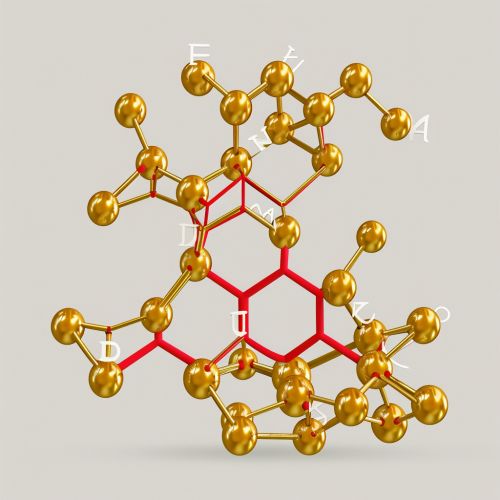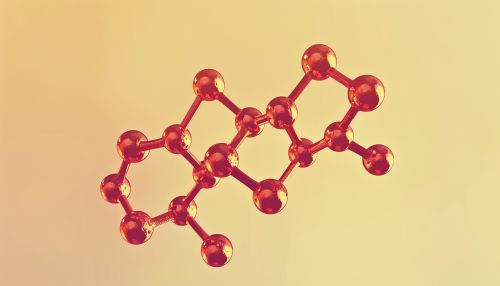Quercetin: Difference between revisions
No edit summary |
No edit summary |
||
| Line 7: | Line 7: | ||
Quercetin is chemically classified as a flavonol, one of the six subclasses of flavonoids. Its IUPAC name is 3,3',4',5,7-pentahydroxyflavone. The molecular formula is C15H10O7, and it has a molecular weight of 302.24 g/mol. Quercetin's structure consists of two benzene rings (A and B) connected by a heterocyclic pyrone ring (C). The hydroxyl groups at positions 3, 5, 7, 3', and 4' contribute to its antioxidant activity. | Quercetin is chemically classified as a flavonol, one of the six subclasses of flavonoids. Its IUPAC name is 3,3',4',5,7-pentahydroxyflavone. The molecular formula is C15H10O7, and it has a molecular weight of 302.24 g/mol. Quercetin's structure consists of two benzene rings (A and B) connected by a heterocyclic pyrone ring (C). The hydroxyl groups at positions 3, 5, 7, 3', and 4' contribute to its antioxidant activity. | ||
[[Image:Detail-79169.jpg|thumb|center|Chemical structure of quercetin, showing two benzene rings connected by a heterocyclic pyrone ring, with hydroxyl groups attached at specific positions.]] | [[Image:Detail-79169.jpg|thumb|center|Chemical structure of quercetin, showing two benzene rings connected by a heterocyclic pyrone ring, with hydroxyl groups attached at specific positions.|class=only_on_mobile]] | ||
[[Image:Detail-79170.jpg|thumb|center|Chemical structure of quercetin, showing two benzene rings connected by a heterocyclic pyrone ring, with hydroxyl groups attached at specific positions.|class=only_on_desktop]] | |||
== Natural Sources == | == Natural Sources == | ||
Latest revision as of 11:14, 17 May 2024
Introduction
Quercetin is a flavonoid, a type of polyphenolic compound, found in many fruits, vegetables, leaves, and grains. It is known for its antioxidant properties and potential health benefits. This article delves into the chemical structure, sources, biosynthesis, metabolism, pharmacokinetics, biological activities, and potential therapeutic applications of quercetin.
Chemical Structure and Properties
Quercetin is chemically classified as a flavonol, one of the six subclasses of flavonoids. Its IUPAC name is 3,3',4',5,7-pentahydroxyflavone. The molecular formula is C15H10O7, and it has a molecular weight of 302.24 g/mol. Quercetin's structure consists of two benzene rings (A and B) connected by a heterocyclic pyrone ring (C). The hydroxyl groups at positions 3, 5, 7, 3', and 4' contribute to its antioxidant activity.


Natural Sources
Quercetin is abundant in a variety of plant-based foods. High concentrations are found in onions, apples, berries, grapes, citrus fruits, cherries, broccoli, and leafy greens. It is also present in tea, red wine, and certain herbs such as dill, cilantro, and capers. The content of quercetin can vary significantly depending on the plant species, growing conditions, and processing methods.
Biosynthesis
The biosynthesis of quercetin in plants involves the phenylpropanoid pathway, which leads to the formation of flavonoids. The key enzymes involved include chalcone synthase (CHS), chalcone isomerase (CHI), flavanone 3-hydroxylase (F3H), flavonol synthase (FLS), and flavonoid 3'-hydroxylase (F3'H). These enzymes catalyze the conversion of phenylalanine to naringenin, which is then hydroxylated and oxidized to produce quercetin.
Metabolism and Pharmacokinetics
Upon ingestion, quercetin undergoes extensive metabolism in the human body. It is absorbed in the small intestine, where it is conjugated to glucuronides, sulfates, and methylated derivatives. The liver further metabolizes these conjugates, and they are excreted via urine and feces. The bioavailability of quercetin is relatively low due to its poor water solubility and rapid metabolism. However, it can accumulate in various tissues, including the liver, kidney, and brain, where it exerts its biological effects.
Biological Activities
Quercetin exhibits a wide range of biological activities, primarily due to its antioxidant properties. It scavenges free radicals, chelates metal ions, and inhibits lipid peroxidation. Additionally, quercetin modulates various signaling pathways, including those involved in inflammation, apoptosis, and cell proliferation. It has been shown to inhibit the activity of enzymes such as cyclooxygenase (COX), lipoxygenase (LOX), and xanthine oxidase (XO), which are involved in the production of pro-inflammatory mediators.
Potential Therapeutic Applications
Cardiovascular Health
Quercetin has been studied for its potential benefits in cardiovascular health. It may help reduce blood pressure, improve endothelial function, and decrease the risk of atherosclerosis. These effects are attributed to its antioxidant, anti-inflammatory, and vasodilatory properties. Quercetin also inhibits platelet aggregation, which can reduce the risk of thrombosis.
Anti-Cancer Properties
Research suggests that quercetin may have anti-cancer properties. It can induce apoptosis, inhibit cell proliferation, and interfere with various signaling pathways involved in cancer progression. Quercetin has shown potential in the treatment of various cancers, including breast, prostate, lung, and colon cancer. However, more clinical studies are needed to confirm its efficacy and safety in cancer therapy.
Neuroprotective Effects
Quercetin's neuroprotective effects have been investigated in the context of neurodegenerative diseases such as Alzheimer's disease and Parkinson's disease. It may help protect neurons from oxidative stress, reduce neuroinflammation, and inhibit the aggregation of amyloid-beta peptides. These properties make quercetin a promising candidate for the prevention and treatment of neurodegenerative disorders.
Anti-Diabetic Effects
Quercetin has been shown to improve insulin sensitivity, reduce blood glucose levels, and protect pancreatic beta-cells. These effects are mediated through its antioxidant and anti-inflammatory actions, as well as its ability to modulate glucose metabolism and insulin signaling pathways. Quercetin may thus be beneficial in the management of Type 2 diabetes.
Anti-Viral and Anti-Bacterial Properties
Quercetin exhibits anti-viral and anti-bacterial properties. It can inhibit the replication of various viruses, including influenza, hepatitis B, and herpes simplex virus. Quercetin also shows activity against a range of bacteria, including Staphylococcus aureus and Escherichia coli. These properties make it a potential candidate for the development of new anti-infective agents.
Safety and Toxicity
Quercetin is generally considered safe when consumed in dietary amounts. However, high doses of quercetin supplements may cause side effects such as headaches, gastrointestinal disturbances, and kidney damage. Long-term safety data is limited, and caution is advised when using quercetin supplements, especially in individuals with pre-existing medical conditions or those taking medications.
Conclusion
Quercetin is a bioactive flavonoid with diverse biological activities and potential health benefits. Its antioxidant, anti-inflammatory, and anti-cancer properties make it a promising compound for the prevention and treatment of various diseases. However, further research is needed to fully understand its mechanisms of action, bioavailability, and long-term safety.
